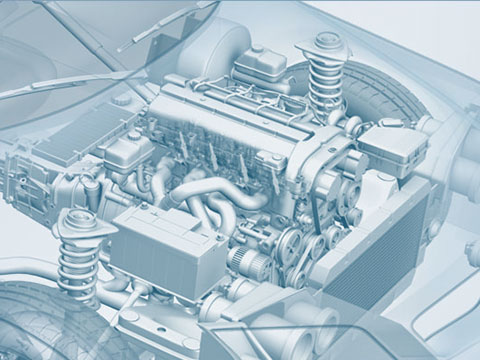E-compressor
Electric compressors, also known as e-compressors, lie at the heart of the air conditioning and refrigerant circuit in hybrid and BEV vehicles.
Function
Instead of the conventional, mechanically driven belt compressor found in vehicles with an internal combustion engine, all-electric passenger cars and many hybrid passenger cars use e-compressors to cool the interior. They power a refrigerant circuit, which compresses the refrigerant flowing within it to the desired pressure so that it vaporises and condenses at the desired temperature. The transition from liquid to gaseous refrigerant (“vaporisation”) generates a refrigerating capacity which enables cooling even below the ambient temperature. This well-known principle for cooling the interior during the summer is also used to cool heat-sensitive components such as the drive battery.
In hybrid passenger cars, the e-compressor is available when the vehicle is being driven both under electric power and by the internal combustion engine. It enables fuel to be saved as the compressor drive energy required when the engine is not running is provided by the recuperated energy stored in the battery.
An e-compressor essentially consists of the following four components:
- Compressor unit: the compressor unit in the e-compressor compresses the gaseous refrigerant, thereby ensuring high pressure and high temperatures. The hot gas is then pumped into the condenser, where the gaseous refrigerant is cooled by the ambient air.
- Electric motor: the electric motor drives the compressor.
- Inverter: this is a power converter that converts direct current (DC) from the high-voltage battery into alternating current (AC) for the electric motor. The air conditioning control unit also sends compressor speed signals to the inverter via the high-voltage control unit in order to regulate the speed of the electric compressor.
- Oil separator: the oil separator ensures that the majority of the oil remains where it is needed to lubricate the compressor. A small amount of oil also reaches the rubber lines and O-rings of the air conditioning system together with the refrigerant to keep them supple.
Safety
The e-compressor is hermetically sealed. There is no shaft seal, meaning there is also no potential risk of refrigerant escaping into the outside air. As such, the refrigerant leakage rate is lower than that for a mechanically driven compressor.






